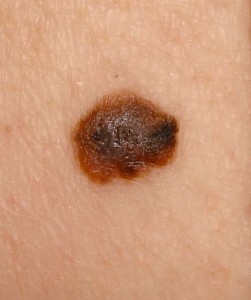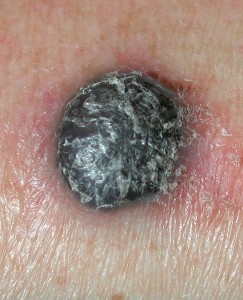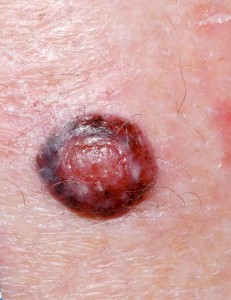What is melanoma?
Melanoma is a cancer of the skin's pigment cells. If it is not detected early it has the capability of spreading through blood vessels and lymph channels to other parts of the body.
- Melanoma is the most common cancer in Australians under the age of 50.
- Around 1 in 10 Australian men and
- 1 in 16 Australian women will develop a melanoma during their lifetime.
Australia has the highest rate of melanoma in the world, resulting in about 1,500 deaths each year. In general Australians are more at risk because of our sunny climate and fair skinned population.
Early diagnosis is essential to facilitate treatment before the melanoma spreads and becomes life threatening.
What causes melanoma?
There is overwhelming evidence that nearly all melanomas are the result of previous sun exposure.
- Occasional sun exposure that produces sunburn is thought to be the leading cause for melanomas in Australians under 50 years old.
- Regular sun exposure over a long period of time is the leading cause of melanomas in older Australians, over 50 years old.
What do melanomas look like?
- 75% of melanomas begin as a new spot, some arise from a pre-existing mole.
- Most melanomas begin as a light brown or black, flat spot, that looks like a mole. Melanomas, unlike moles, grow progressively larger at quite a fast rate, typically over a few months, changing in colour and shape.
- Some melanomas may lack brown pigmentation and appear pink (amelanotic melanoma).
What to look for:
- Recent appearance.
- Change in colour or shape
- Increasing in size.
- Irregular border.
The pictures below are of actual melanomas:
Detection:
- You should check your skin to look for any changes. We recommend you check your skin at the beginning of each new season.
- Melanomas eventually grow, increasing in size and depth and may become life threatening.
- Melanomas detected while they are still flat are almost always cured by removal.
Risk Factors
You are at a greater risk of developing a melanoma if you have:
- Fair skin.
- A large number of moles or irregular (dysplastic) moles.
- Light hair (especially red hair) and a light eye colour.
- Freckles or solar lentigines (freckles caused by sunburn).
- Had any kind of skin cancer before.
- Previously had a melanoma.
- A close blood relative with melanoma (you have double the average risk)
How do we treat melanomas?
We remove all melanomas surgically including a ‘safety margin’ of skin around the visible area.
What sort of follow up is needed?
After the removal of a melanoma we recommend that you undergo skin checks with Dr Gillespie every 3-6 months.
Regular, quarterly self-examinations of the skin are important to detect any suspicious new lesions that may need to be reported.
All melanoma photos courtesy of Melanoma Institute Australia. For more information visit www.melanoma.org.au






